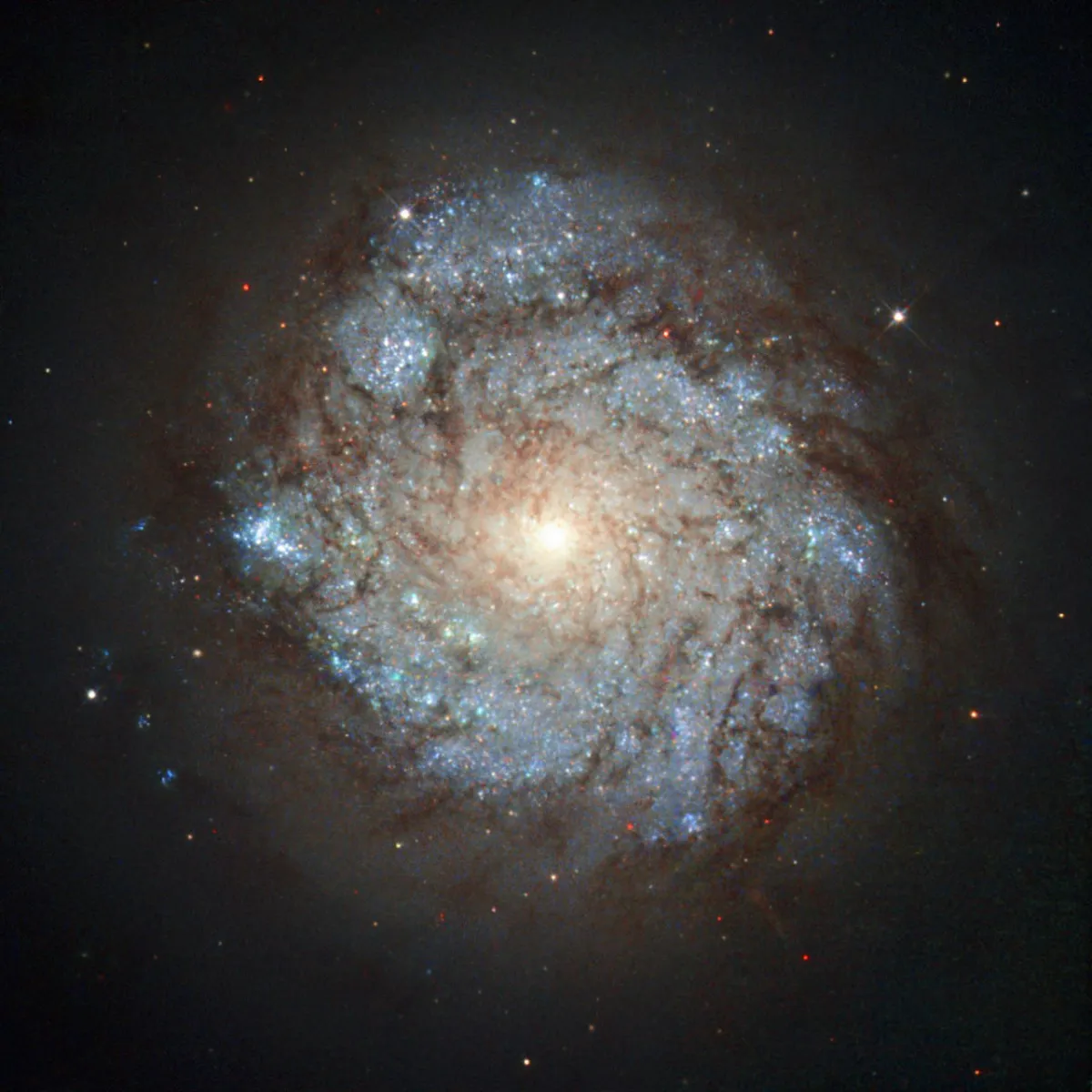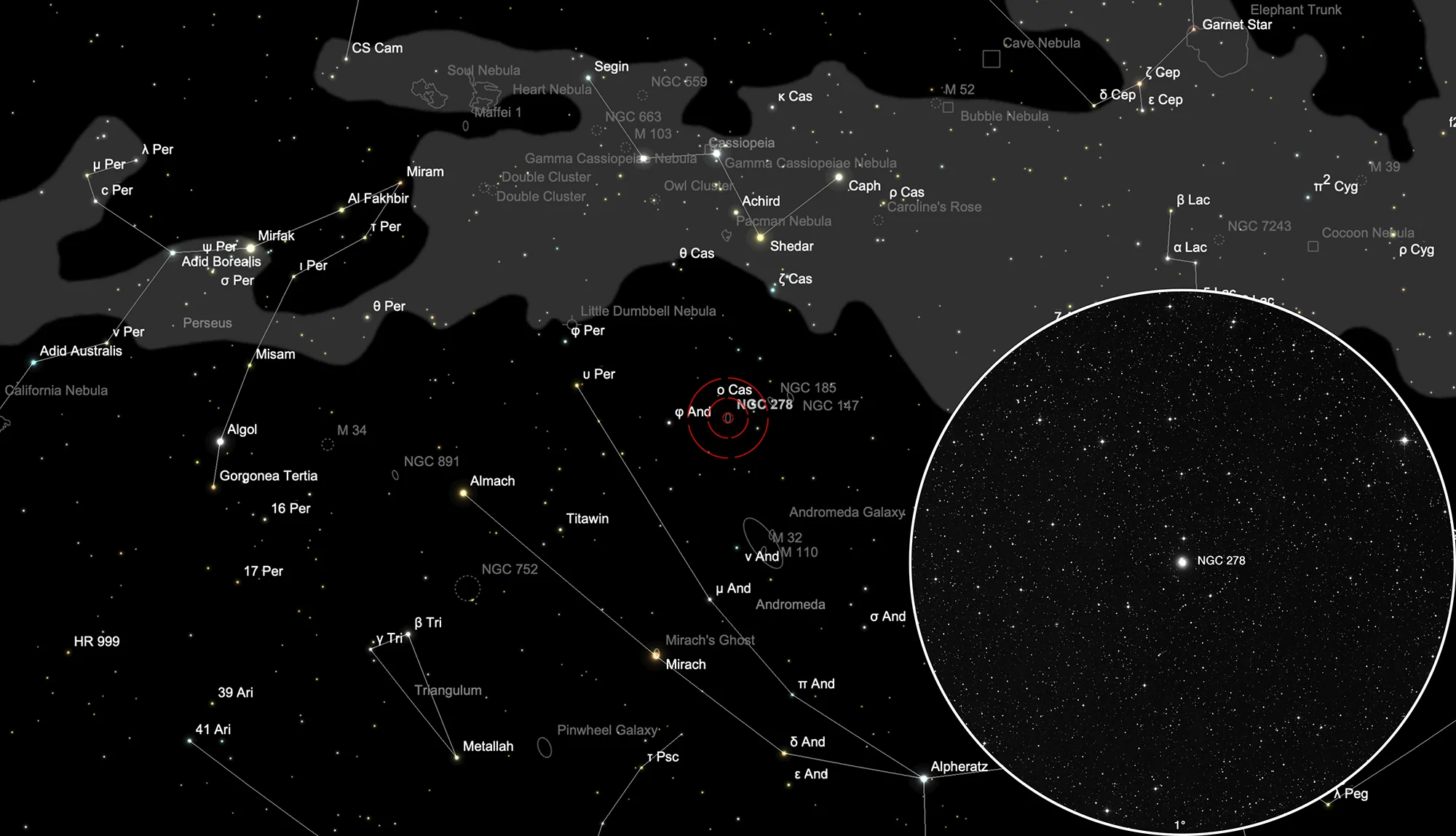Galaxy NGC 278

History
This galaxy was discovered by William Herschel on 11 December 1786 using his 18.7 inch reflector. He cataloged it as I 159 and noted: «Very bright, round, very gradually brighter in the middle, 1.5' diameter.» [464] Dreyer added it as NGC 278 to his «New General Catalogue» published in 1888. [313]
Physical Properties
NGC 278 is a galaxy currently undergoing an immense burst of star formation. But the star forming regions do not extend to the galaxy’s outer edges. It is only taking place within an inner ring some 6500 light-years across. It is thought to have been caused by a merger with a smaller, gas-rich galaxy that ignited only the centre of the galacy and dusty remains dispersed into the outer regions. The distance to NGC 278 is around 40 million light years. [633]
| Designation | NGC 278 |
| Type | Gx (SBb) |
| Right Ascension (J2000.0) | 00h 52m 04.5s |
| Declination (J2000.0) | +47° 33' 03" |
| Diameter | 2.1 × 2 arcmin |
| Photographic (blue) magnitude | 11.5 mag |
| Visual magnitude | 10.8 mag |
| Surface brightness | 12.2 mag·arcmin-2 |
| Position Angle | 12° |
| Redshift (z) | 0.002090 |
| Distance derived from z | 8.83 Mpc |
| Metric Distance | 11.800 Mpc |
| Dreyer Description | cB, pL, R, 2 st 10 nr |
| Identification, Remarks | WH I 159; h 71; GC 158; UGC 528; MCG 8-2-16; CGCG 550-16; IRAS 00492+4716 |
Finder Chart
The galaxy NGC 278 is located in the constellation Cassiopeia. The best observation time is June to March, when this in Europe circumpolar constellation is highest in the sky.
